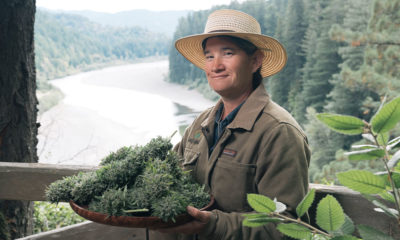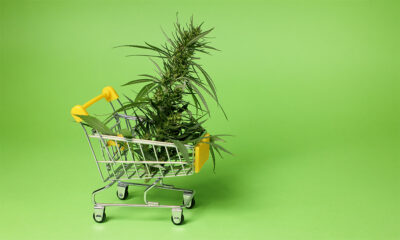
Economics
California Drought Could Drive Up Nation’s Cannabis Prices
There is little doubt that the drought in California this year will affect millions of people, the situation is ongoing and cannabis prices are set to fluctuate around the nation as the California supply dries up.
When Colorado and Washington legalized marijuana in 2012, a national trend was jumpstarted toward mainstream acceptance of the Green Rush. The Huffington Post declared “Legal marijuana is among the fastest-growing markets in the United States.” Some say that California grows the best cannabis. Most would agree that California grows the most. The question is, will the drought in California change that and how will that affect the price of marijuana?
According to USA Today Gov. Jerry Brown declared a statewide drought emergency Friday, an action that sets the stage for new state and federal efforts. Brown is urging voluntary water conservation to the tune of a 20% reduction. He stopped short of saying such a reduction should be mandatory — for now, at least.
The agriculture industry is responsible for more than three-quarters of California’s water consumption, according to a 2009 UCLA report.
In a piece called Marijuana & the California Drought on Radio Curious, Tim Blake, a leading expert on sun grown organic cannabis and founder of the Emerald cup, California’s oldest competition among outdoor growers of organic cannabis, shared his thoughts:
“The people that have water, that have deep wells or large lakes or ponds are going to do quite well because you’re going to see cannabis probably double or triple in cost over the next year, just like every other agricultural product [grown in California].”
Blake says two-thirds to 90 percent of available parcels will not be planted due to the drought and as the water runs out growers will be forced to abandon their plants. He also predicts there will be water disputes and theft. The drought could spell disaster for this year’s crop, reducing the supply on both the legal and illegal markets.
In an article in The Christian Science Monitor blog, the argument is made that cannabis cultivation is a big part of the water shortage problem.
“They’re using a whole lot of water.” said Lt. Rusty Noe of the Mendocino County sheriff’s office in a telephone interview with the Bright Green Blog.
Lt. Noe noted that police have seized more than 500,000 pot plants this season in Mendocino County alone. Each plant requires about one gallon of water per day. California is entering the fourth year of a severe drought, with residents in some areas facing the first mandatory water restrictions in two decades and farms laying off thousands of workers.
“It’s really affecting our water supply,” said Noe of the illicit growing sites.
Bruce Mirken of the Marijuana Policy Project responded on the post:
“Despite the comments from official sources quoted in this piece, the problem is not marijuana — which, as an agricultural commodity, is pretty unremarkable and not unusually water-intensive. The problem is prohibition, which keeps the state’s immense marijuana industry outside the normal regulations that apply to other farmers and puts it in an entirely unregulated criminal underground. If we treated marijuana like we treat beer, wine and liquor, it would be grown by farmers who — like those who now grow wine grapes or barley and hops for beer — would have to abide by labor, environmental and water-conservation laws. In California, that includes water allocations that are subject to reduction in drought years. It is a common rhetorical trick for officials to blame the problems caused by prohibition on marijuana, but the real problem is bad policies producing bad (and entirely predictable) results.”

























